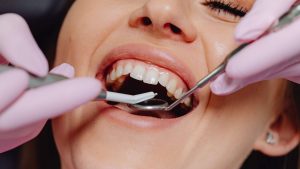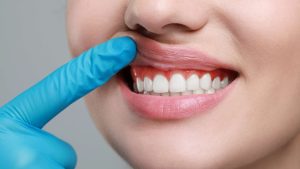Interestingly, you stumbled upon this topic just as you’re contemplating your next dental visit. Laughing gas, or nitrous oxide, often takes the spotlight when discussing sedation in dentistry, but what exactly is it? You might know it’s used to calm nerves, yet there’s more to its story.
How does it work, and what exactly happens in your brain when you breathe it in? While its benefits are well-known, potential side effects are often overlooked. You might find the complete picture of laughing gas more intriguing than you initially thought, especially when considering potential impacts on your body.
Understanding Laughing Gas
When it comes to dental visits, understanding laughing gas can make a world of difference in your comfort level.
Laughing gas, or nitrous oxide, has a long history of usage in easing dental anxiety. It’s often chosen for its safety guidelines and effectiveness. Patients have shared positive experiences, noting its ability to reduce fear and discomfort during procedures.
You stay conscious, which helps in communicating any discomfort you might feel. Dentists follow strict safety protocols, ensuring it’s a safe option.
If you’re anxious about dental visits, laughing gas can be a great alternative sedation method. However, if you’re concerned about its use, discuss other sedation options with your dentist to find what best suits your needs.
How It Works
Understanding how laughing gas works can alleviate many concerns about its use during dental procedures.
It’s applied through administration techniques involving a mask and mixing nitrous oxide with oxygen for inhalation. This method has been refined over time, drawing from historical usage dating back to the 18th century.
You’ll find that patient experiences often highlight its effectiveness in easing anxiety, making dental visits more comfortable.
Safety measures are crucial, ensuring that the gas is administered at safe levels, with constant monitoring. This makes it a reliable choice compared to alternative sedation methods.
You can communicate any discomfort by remaining conscious and responsive, allowing adjustments.
Laughing gas’s quick onset and offset contribute to its popularity as a safe, efficient sedation option.
Effects on the Brain
Nitrous oxide, often called laughing gas, has a fascinating impact on the brain, quickly altering your state of mind. When inhaled, it modifies brain chemistry, reducing anxiety and a sense of calm.
You may experience euphoric sensations, which can make the procedure more enjoyable. The gas also effectively relieves pain, helping you remain comfortable during treatment.
One of the benefits is the rapid recovery time, allowing you to return to normal activities almost immediately.
- Alters brain chemistry for a calming effect
- Induces euphoric sensations, enhancing mood
- Reduces anxiety, making procedures less daunting
- Offers effective pain relief, increasing comfort
- Ensures quick recovery time, minimizing downtime
Potential Side Effects
While laughing gas provides great benefits during dental procedures, it’s important to be aware of its potential side effects. Some patients report mental confusion, nausea, or headaches.
Considering safety precautions is crucial; your dentist will follow strict dosage guidelines to minimize risks. If you’re concerned, discuss alternative sedation options. Patient experiences vary, so sharing your concerns with your dentist can help tailor a plan that suits you.
Recovery tips after the procedure include relaxing and avoiding strenuous activities, as increased sleepiness can occur. Most effects fade quickly, but contact your dentist if you experience prolonged discomfort.
Resources and Support
After considering potential side effects, it’s reassuring to know there are plenty of resources and support available to help you make informed decisions about using laughing gas.
Understanding patient experiences and adhering to safety guidelines can help you confidently approach your dental treatment. If dental anxiety is a concern, exploring treatment alternatives might be beneficial.
Insurance coverage can also play a crucial role in making laughing gas a viable option for you. Here are some resources to consider:
Patient testimonials: Gain insights from others’ experiences.
Professional guidelines: Ensure safe and effective use.
Alternative therapies: Explore other options for managing anxiety.
Insurance plans: Check what’s covered under your policy.
Dental consultations: Discuss concerns and options with your dentist.
Experience Exceptional Dental Care with Hand Family Dentistry
At Hand Family Dentistry, our commitment to providing exceptional general and cosmetic dental services ensures that every patient receives the highest level of care.
With our expert team and advanced techniques, we strive to make each visit comfortable and stress-free. As a trusted partner in oral health, we understand the importance of reducing dental anxiety, and we offer services like laughing gas to help you feel at ease.
Our dedication to patient satisfaction and well-being is evident in every aspect of our practice. Choose Hand Family Dentistry for a dental experience that prioritizes your comfort and confidence, leaving you with a healthier, more radiant smile.


